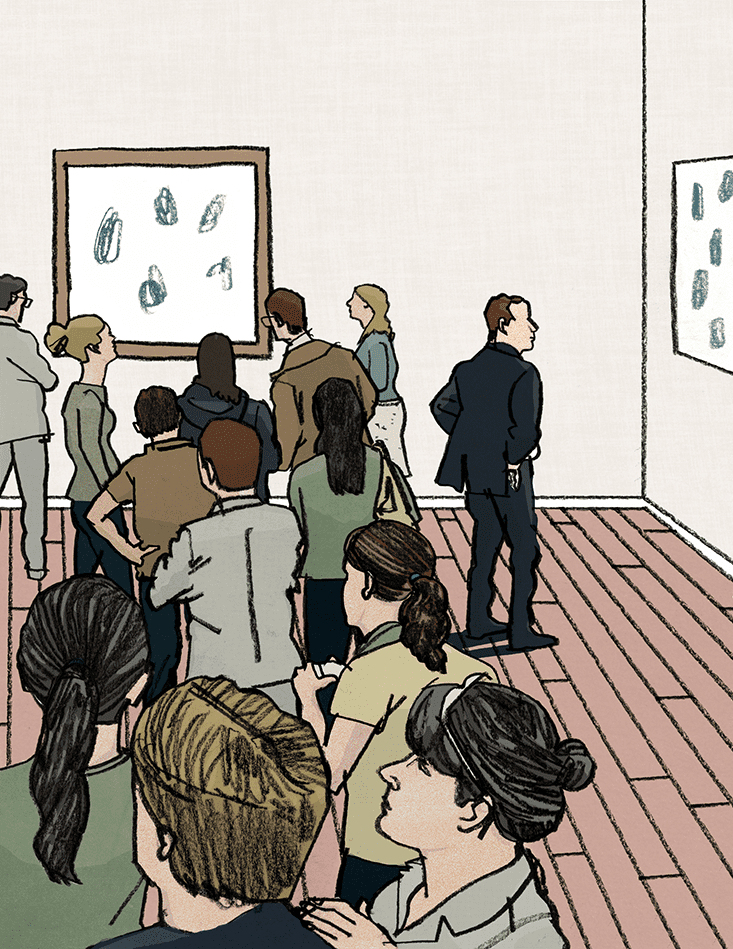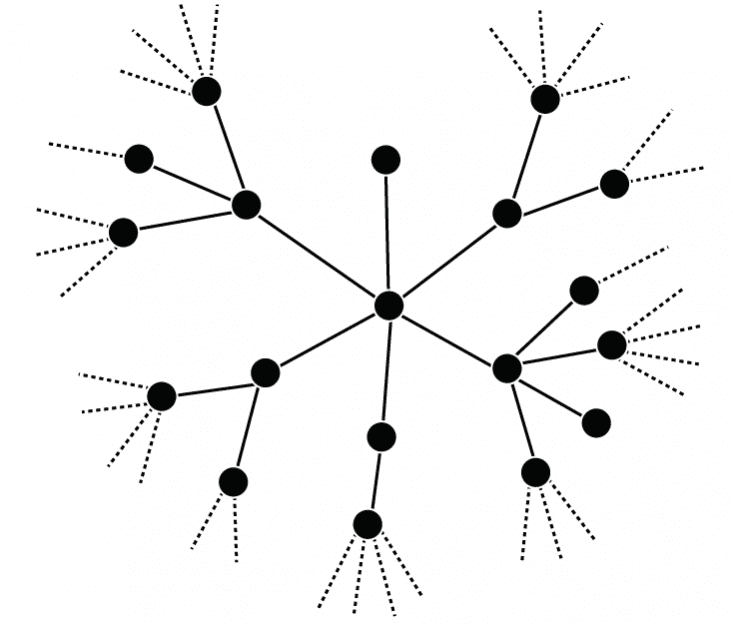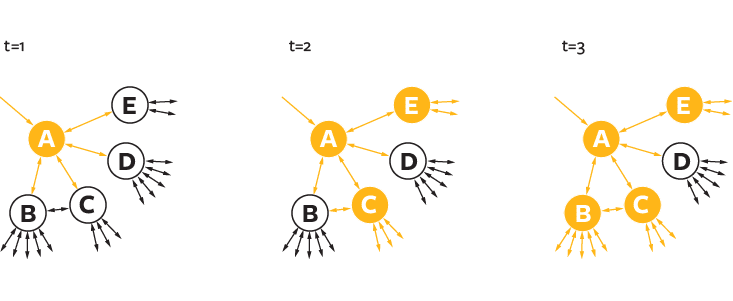Our understanding of fame is critical to how we see each other and our society. But it is also badly wrong. Let me tell you why. We humans are storytelling and story-finding machines: homo narrativus, if you will. In making sense of the world, we look for the shapes of meaningful narratives in everything. Even in science, we enjoy mathematical equations and algorithms because they are a kind of universal story. Fluids—the oceans and atmosphere, the blood in your body, honey—all flow according to a single, beautiful set of equations called the Navier-Stokes equations.
In our everyday, human stories, far away from science, we have a limited (if generous) capacity to entertain randomness—we are certainly not homo probabilisticus. Too many coincidences in a movie or book will render it unbelievable and unpalatable. We would think to ourselves, “that would never happen in real life!” This skews our stories. We tend to find or create story threads where there are none. While it can sometimes be useful to err on the side of causality, the fact remains that our tendency toward teleological explanations often oversteps the evidence.
We also instinctively build our stories around individuals. To see evidence for this fact, we need only to look to local coverage of a recent disaster. For example, one article in The New York Times on Hurricane Sandy discussed the (unproven) fact that more babies are generated when generators fail. It opened with the line:
“Late last October, Hurricane Sandy pumped six feet of water into the lobby of a residential building in downtown Jersey City, trapping Meaghan B. Murphy and her husband, Patrick, in their apartment and leaving them without electricity for days.”
We instinctively build our stories around individuals.
Another Times article discussed the loss of life from the storm, starting with:
“In the days after Hurricane Sandy swept through the Rockaways, residents were left to sift through the devastation, taking stock of who and what had survived. But few seemed to notice Keith Lancaster was missing.”
Both stories tether the complex, stochastic narrative of the larger population to that of an individual. We can’t blame the Times here: This kind of narrative works. We can put ourselves into that person’s mind, walk in their shoes, and travel in their story.
But social groups are far more complicated than any individual story. Networked, distributed, conflicting, and changing, they do not simply map onto an individual. For this reason, it’s unnatural and very difficult to put ourselves into the collective minds of groups. Even a group of two is too much—we have to side with one person or switch between points of view. We are embodied stories of one.
So, when we discuss groups, we are left without metaphor. What do we do as a result? We force our single-body stories onto them: Groups become one dominant person—a monarch, the President, Michael Jordan—plus a supporting cast.
These two traits—our compulsion to tell stories, and our bias towards the individual—conspire to ruin our intuitive understanding of fame. They cause us to believe that fame is earned, that it is the result of the intrinsic properties of the famous person or object. Consider, for example, the Mona Lisa, perhaps the most famous painting in the world. Its fame is ascribed to all manner of intrinsic qualities: the subject’s mysterious smile, her changeable expression, the way her eyes follow you, da Vinci’s novel use of sfumato, the individual genius of Leonardo himself.

This has the makings of an excellent story. It’s simple and causal, and it means that the Mona Lisa’s fame was inevitable, and deserved. But it’s the wrong story. If we travel to the Louvre, we find ourselves bemused immediately by the surprising smallness of the Mona Lisa—it’s only 30 inches by 21 inches. We observe that museum-goers pause for a few minutes at most in front of the painting. And we wonder if this is really the best we could do. As Donald Sassoon lays out in his book Becoming Mona Lisa, Leonardo’s now-great painting took 400 years to become world-renowned, and jumped in fame only after being stolen and later vandalized—certainly not events dictated by some intrinsic quality.
These two traits—our compulsion to tell stories, and our bias towards the individual—conspire to ruin our intuitive understanding of fame.
My own research has shown that fame has much less to do with intrinsic quality than we believe it does, and much more to do with the characteristics of the people among whom fame spreads. For example, in 2006, Matt Salganik, myself, and Duncan Watts reported the results of an online experiment of ours called Music Lab.1 We gathered roughly 14,000 Internet participants, and gave them a total of 48 songs by unknown artists to listen to, rate, and download. What we didn’t tell them was that they were randomly assigned to nine separate worlds: one world in which participants acted independently of each other, and eight parallel social worlds in which participants saw the current number of downloads of each song within their world—an indication of popularity.
The independent world served as a control to the eight social worlds. The popularity of songs in this world reflected the intrinsic “quality” of the songs. There were a few songs that did poorly in this world, plus all eight social worlds, and others that performed reliably well.
Things were very different in the social worlds. Here, rankings were much more affected primarily by chance and the choices made by early participants: One song, for example, ranked first in one world and 40th in another. What’s more, we were able to influence the song rankings by tweaking the strength of the social “signal” in each world, through varying whether the songs were arranged randomly, in a jukebox layout, or in order of the number of previous downloads. The experiment showed clearly that people like to imitate each other. Even weak social signaling skewed the popularity distributions significantly.
As we upped the signaling strength, the inequality among songs increased. The famous became more famous. But the popularity ordering began to differ more strongly between worlds: The choices of the early participants mattered more, and the system become more uncertain. The data implies that there is no such thing as fate, only the story of fate. This idea is encoded in the etymology of the word: “fate” derives from the Latin fatus, meaning “spoken”—talk that is done—in direct opposition to the root of “fame,” which is fāma, meaning “talk.” Destiny is not deterministic but probabilistic: Re-run the world, and the outcomes may well change. In fact, social systems bear a sensitivity to initial conditions that is the hallmark of chaos theory.
Fame has much less to do with intrinsic quality than we believe it does, and much more to do with the characteristics of the people among whom fame spreads.
But most importantly, the experiment highlights the role of imitation. The next time you listen to Justin Bieber, and wonder, “Why?” remember that global success has more to do with social imitation than anything else. We have an extraordinary ability and drive to replicate each other’s physical actions and mental processes. Copying is a fundamental part of how we learn, it gives us social cohesion, and it signals group affiliation. It is so pervasive that small moments of mimicry can fall outside of our attention, allowing us to misattribute fame. The origin of global fame is primarily the ability of a given system to allow the faithful copying of a given message.
A useful analogy might be the match and the wildfire. Try this piece of pulp fiction I’ve made up:
When a matchbox full of lazily dreaming future grill-lighters was bought at a small-town store on a hot summer day in the California desert, little did it know that one of its passengers would become the most notorious, most sought after weapon of all time. Two weeks later one of its matches would be used to start a wildfire that would burn for months and destroy 50 million acres. Anyone armed with a match like this one would be able to take over the world.
This is a patently ridiculous story—a single match is not the entire reason for a wildfire starting and spreading. But that’s exactly how we naturally think about social wildfires: that the match is the key. In fact, there are two requirements: a local requirement (a spark), and a global requirement (the ability of the fire to spread). And it’s the second component that is actually the bottleneck: If a forest is dangerously dry, any spark can start a fire. Sparks are easy to come by, and are not intrinsically special.

The Language of Fame: Let’s represent people as nodes in a simple random network like the one pictured above. The sole defining feature of any node in a random network is the number of links it has, or its “degree,” which we’ll call k. Instead of thinking about infected nodes, it’s more useful to think about the infected links that emanate from infected nodes. First, imagine we’re traveling along a link in our network away from a node (infected or not). The probability that we reach a node with k friends can be written as kP /〈k〉, where P is the probability that a randomly chosen node has degree k, and the normalization〈k〉is the average degree over the entire network. Now if a message is passing along this link, the receiving node will either reject the message or become infected and generate k-1 new infected links. Let’s define β to be the probability that the receiving node is infected by the sending node’s message. Then we can write the following expression for something we call the gain ratio, R,
which is the expected new number of infected links generated by a single infected link. If R > 1, infected links beget more infected links, and the message will successfully spread throughout the network.
Our research has shown that a match-centric viewpoint completely fails to describe many model social (and other) networks. There is nothing in a mathematical description of spreading fame (see The Language of Fame) about the match that sets the fire going—instead, it’s all about how the network connects, and how acceptance of a message spreads along links between people. Just as real forests must be ready to burn before a forest fire can erupt, the key condition for spreading in social networks is a global one: Many average, trusting people need to be able to experience and then want to share choices in their social networks, far away from the source.
Network models of fame can provide counter-intuitive insights. For example, people with many friends can actually impede the growth of a social contagion, rather than accelerate it. To see how this might happen, let’s look at a highly idealized social wildfire called threshold contagion, first explored in model form by the Nobelist Thomas Schelling in his work on racial segregation. Threshold behavior works like this: If enough of your friends believe in something, then so do you. This is called “social proof,”2 and is a core kind of interpersonal influence mechanism at work in our Music Lab experiment.
Imagine a population where everyone will believe a specific message if at least 1 in 5 of their friends does. In the figure below, people are represented by the letters a through e. Friendships are represented by arrows, and time is represented by the letter t. The message that has been earlier taken on by a starts to spread, first to c and e (who hear the message from 1 in 5 and 1 in 3 of their friends). Then b switches because they now hear the message from 2 in 8 friends. But d continues to resist as its signal remains at 1 in 6, a precarious position.

Unlike the spread of a biological disease, threshold contagion does not spread through well-connected nodes. In fact, these nodes tend to resist the message. Instead, the initial message spreads far if there are sufficiently many nodes that are both a little influential (they have a moderate number of friends) and a little susceptible to being influenced.
We also observe that small changes in the population’s behavior or the structure of their social networks can lead to big differences globally. If everyone’s threshold was 1 in 4 instead of 1 in 5 for this message then individual a would not have repeated the message in the first place and spreading would have locally stopped there. If everyone’s threshold was low, say 1 in 10, then the message would have spread immediately through this subnetwork in one time step, converting d as well.
There is no such thing as fate, only the story of fate.
For more complicated model networks, where our mathematical analyses come up short, Duncan Watts and myself have studied social contagion and influence through simulation. In our paper, “Influentials, Networks, and Public Opinion Formation,”3 we again found that, for certain networks, individuals with many friends were actually less useful for spreading social contagion, and were less able to start social wildfires than those with a moderate number. The research also showed that, for many kinds of complex networks, the power of the match to generate a social contagion is greatly limited. Taken together, the results put into question the existence of hyper-influentials or “opinion leaders”—those few, special, and above all, hypothetical people who are responsible for the choices of the rest of the population. The matches of society.
But the idea of the opinion leader persists. Why? Because we tell stories, and because we focus on individuals. We can’t resist the promise that if we can find these special people, we can change society to our ends, whether it be to sell products or to improve people’s health. Our plight is made worse by “survivorship bias”—the tendency to focus on successful stories of such influencers.
The cover of Malcolm Gladwell’s massively successful book about social wildfire, The Tipping Point, shows an unused match above the words “How little things can make a big difference.” But the forest is not in the frame, and it should be.
Peter Sheridan Dodds is a professor at the University of Vermont (UVM) working on system-level problems in many fields, with a focus on sociotechnical systems. He is director of UVM’s Complex Systems Center, co-leader of UVM’s Computational Story Lab, and a faculty member in the Department of Mathematics and Statistics. He can be reached at [email protected].
References
1. Salganik, M.J., Dodds, P.S. & Watts, D.J. Experimental study of inequality and unpredictability in an artificial cultural market. Science 311, 854-856 (2006).
2. Cialdini, R.B. Influence: Science and Practice Allyn and Bacon, 4th Edition, (2000).
3. Watts D.J., & Dodds, P.S. Influentials, Networks, and Public Opinion Formation. Journal of Consumer Research 34, 441-458 (2007).



